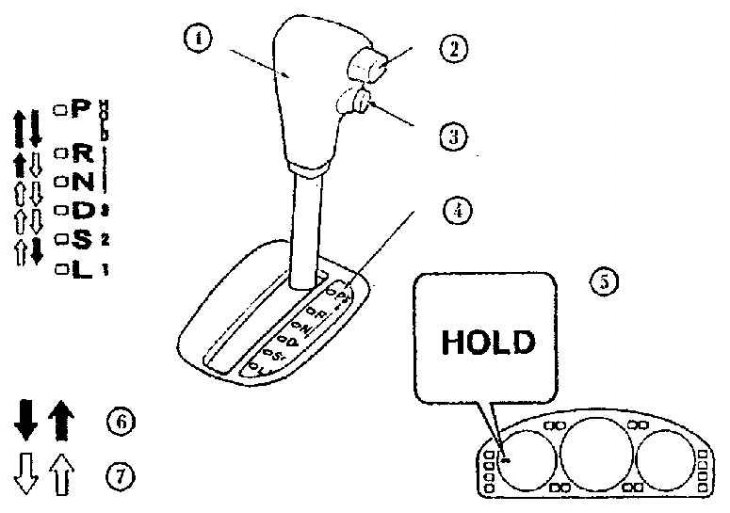Automatic gearshift controls

1. Lever for switching modes; 2. Unlock button (to prevent dangerous switching); 3. Hold button (pressing this button activates the hold mode; Pressing it again disables this mode); 4. Switch pattern indicator (indicates the position of the selector lever) 5. Hold indicator (this indicator turns on when the hold mode is selected); 6. Switching with the push of a lock button; 7. Switching without pressing the unlock button
Gear ranges
When the starter is turned on, the mode selector lever must be in the P or N position.
R (parking)
Position P blocks the front wheels.
Attention! Hold the vehicle with the P position. Use a gear "R" instead of a parking brake is not recommended. Use both the parking brake and the gear to safely park your vehicle "R".
Attention! Switching to P or R (reverse) while driving can damage your transmission.
Shifting into drive or reverse at engine speeds above idle can damage your transmission.
R (reverse)
In position R, the car only moves backwards. It must be stopped before switching from forward to reverse or vice versa.
N (neutral position)
When the selector is in the neutral position (N) wheels are not blocked. The car can roll freely even on the slightest incline if the parking brake is not set.
Warning! It is dangerous to shift from N or P to the gear corresponding to the movement when the engine is running at a speed higher than idling. If this is done, the vehicle may roll away abruptly, resulting in an accident and serious injury. If the engine is running at speeds above idle, do not shift from N or P to drive gear.
D (move)
D is the normal position corresponding to the move. From the stop position, the drive axle will automatically shift in a sequence of four gears.
S (second gear)
The S position is useful when driving in slow traffic areas and when going uphill.
L (low speed)
Use the L position when driving with a heavy trailer and when climbing a steep hill.
Gear pattern without hold mode
D – 1st, 2nd, 3rd, 4th
S – 1st, 2nd, 3rd
L - 1st, 2nd
